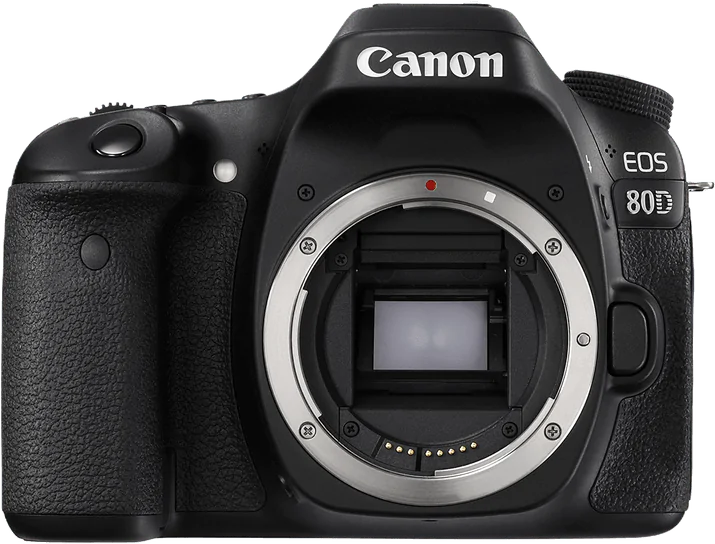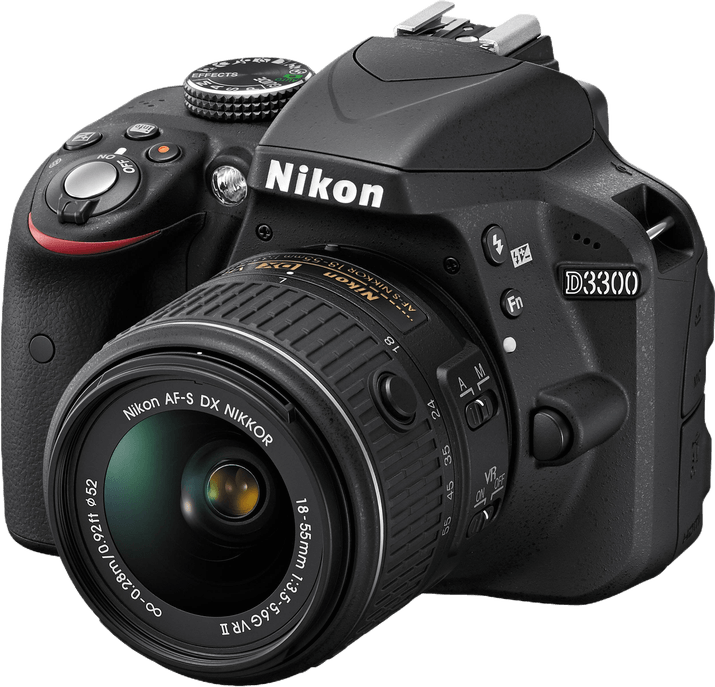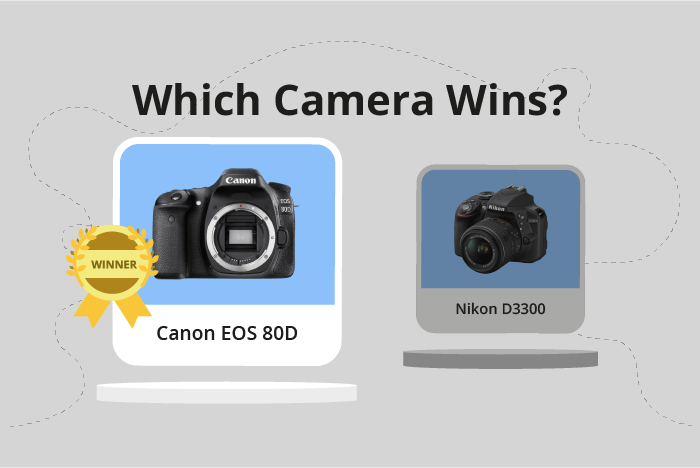Canon EOS 80D vs Nikon D3300 Comparison
Canon EOS 80D

Nikon D3300

The Canon EOS 80D comes out ahead with a score of 64/100, while the Nikon D3300 trails at 55/100. Both cameras share common features, such as being DSLR cameras announced in the 2010s, with the EOS 80D in 2016 and the D3300 in 2014.
The EOS 80D has advantages like a more recent release year and a larger camera size of 139 x 105 x 79mm. However, it’s also heavier, weighing 730g / 1.61lbs. On the other hand, the Nikon D3300 is more budget-friendly with a launch price of $650, and it’s lighter at 430g / 0.95lbs, making it more portable with its smaller size of 124 x 98 x 76mm.
Considering these factors, the Canon EOS 80D may be a better option for those seeking a more recent model and larger size, while the Nikon D3300 is a more affordable and lighter choice.
Canon EOS 80D vs Nikon D3300 Overview and Optics
The Nikon D3300 wins in the optics comparison with a score of 64/100, while the Canon EOS 80D scores 63/100. Both cameras share some common specifications, including 24.2 Megapixels, a CMOS sensor type, an APS-C sensor size, and no image stabilisation. They also have different lens mounts, with the Canon using the EF-S mount and the Nikon using the F DX mount.
The Nikon D3300 has a higher DXOMARK sensor score of 82 compared to the Canon EOS 80D’s score of 79. This difference means the Nikon D3300 provides better image quality, particularly in low light situations. The Nikon D3300 also uses the Expeed 4 processor, which contributes to its superior image quality.
On the other hand, the Canon EOS 80D has a faster shooting speed of 7 frames per second compared to the Nikon D3300’s 5 frames per second. This advantage allows the Canon EOS 80D to capture fast-moving subjects more effectively, making it a better choice for action and sports photography.
Taking these factors into consideration, the Nikon D3300 is the better choice for photographers prioritising image quality, especially in low light conditions. The Canon EOS 80D, however, is more suitable for those who require a faster shooting speed to capture fast-paced action. Both cameras have their strengths and weaknesses, and the choice between them ultimately depends on the specific needs and preferences of the photographer.
Canon EOS 80D vs Nikon D3300 Video Performance
The Canon EOS 80D emerges as the winner in video capabilities, scoring 70 out of 100 points, compared to the Nikon D3300’s score of 56. Both cameras share some common specifications, such as Full HD video resolution with maximum dimensions of 1920 x 1080 and a maximum video frame rate of 60fps. However, the Canon EOS 80D outperforms the Nikon D3300 in certain aspects, contributing to its higher score.
One of the key advantages of the Canon EOS 80D is its built-in time-lapse functionality. This feature allows users to create stunning time-lapse videos without requiring additional software or equipment. The Nikon D3300, on the other hand, lacks this built-in feature, making it less convenient for users who wish to create time-lapse videos.
Despite its lower score, the Nikon D3300 still holds its own in terms of video capabilities. Its Full HD resolution and 60fps frame rate ensure high-quality videos, matching the Canon EOS 80D in these aspects. However, the absence of built-in time-lapse functionality puts it at a disadvantage compared to the Canon EOS 80D.
Taking these factors into account, the Canon EOS 80D proves to be the superior camera for video capabilities, thanks to its built-in time-lapse feature. The Nikon D3300, while still delivering quality videos, falls short in comparison due to its lack of time-lapse functionality. Users who prioritize video capabilities and desire a more comprehensive set of features should consider the Canon EOS 80D, while those who are content with basic video performance may find the Nikon D3300 suitable for their needs.
Canon EOS 80D vs Nikon D3300 Features and Benefits
The Canon EOS 80D outperforms the Nikon D3300 with a feature score of 70/100 compared to the latter’s 41/100. Both cameras share some specifications, including a 3-inch screen size and the absence of GPS functionality. However, the Canon EOS 80D has several advantages that contribute to its higher score.
The EOS 80D boasts a higher screen resolution of 1,040,000 dots, compared to the D3300’s 921,000 dots. This difference results in a clearer and more detailed display on the EOS 80D. Additionally, the Canon EOS 80D has a touchscreen, making it easier to navigate menus and settings. In contrast, the Nikon D3300 lacks this feature. The EOS 80D also has a flip screen, which provides more flexibility for shooting at different angles, while the D3300 does not offer this option.
The Canon EOS 80D features Wi-Fi connectivity, allowing users to transfer images and control the camera remotely. The Nikon D3300 does not have this feature, limiting its sharing and remote control capabilities.
The Nikon D3300 does not have any significant advantages over the Canon EOS 80D in terms of features. The EOS 80D’s higher score reflects its superior specifications, making it a better choice for those prioritizing camera features.
Considering the difference in feature scores and the advantages offered by the Canon EOS 80D, it is evident that the EOS 80D is a more feature-rich camera compared to the Nikon D3300. This makes the Canon EOS 80D a better choice for photographers who value advanced features and functionality in their camera.
Canon EOS 80D vs Nikon D3300 Storage and Battery
The Canon EOS 80D outperforms the Nikon D3300 in storage and battery with a score of 43/100, while the Nikon D3300 scores 32/100. Both cameras have one memory card slot and accept SD, SDHC, and SDXC cards. Neither camera offers USB charging.
The EOS 80D has a longer battery life, providing 960 shots per charge compared to the D3300’s 700 shots. This stems from the EOS 80D using the LP-E6N battery type, whereas the D3300 uses the EN-EL14a battery type. The greater battery life makes the EOS 80D more suitable for extended shooting sessions.
The Nikon D3300 does not excel over the EOS 80D in storage or battery. However, it still provides a decent battery life and accepts the same memory card types. This makes the D3300 a viable option for casual photography sessions.
Comparing the two, the Canon EOS 80D is the stronger option for storage and battery, especially for photographers who require longer shooting times. The Nikon D3300 remains a suitable choice for those with less demanding battery life needs.
Alternatives to the Canon EOS 80D and Nikon D3300
Are you still undecided about which camera is right for you? Have a look at these popular comparisons that feature the Canon EOS 80D or the Nikon D3300:

